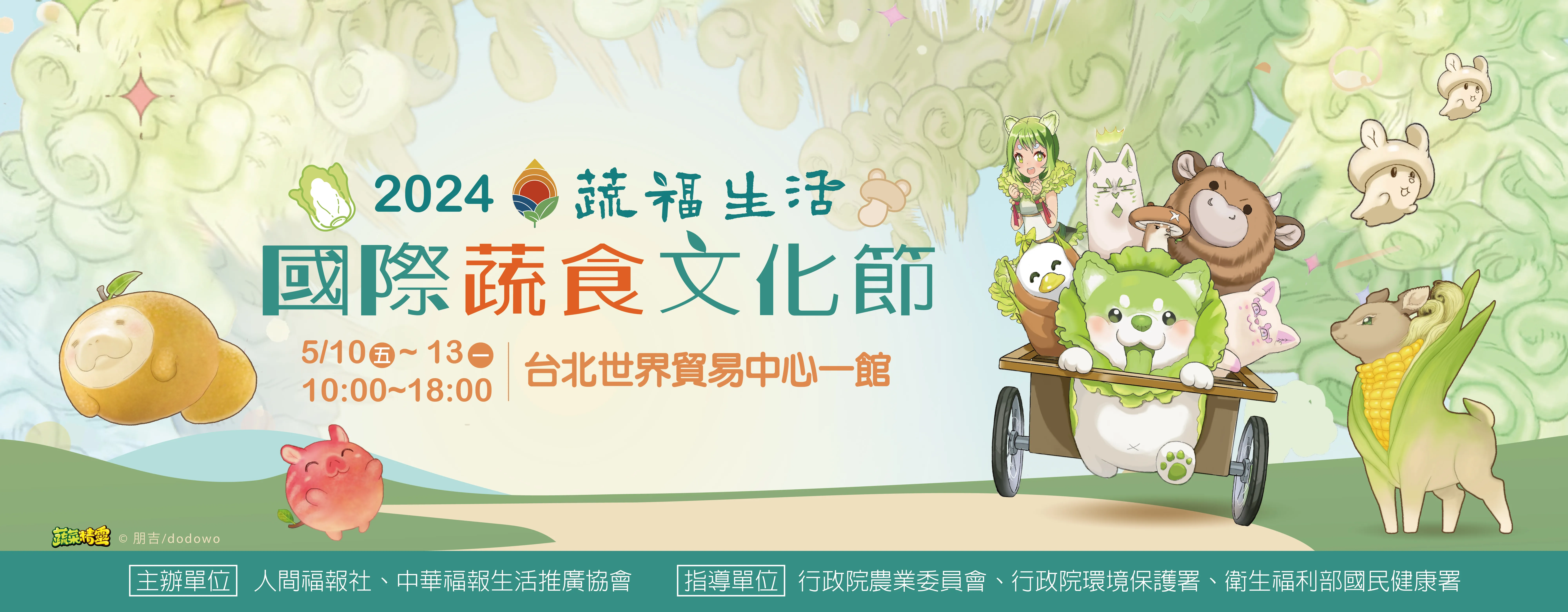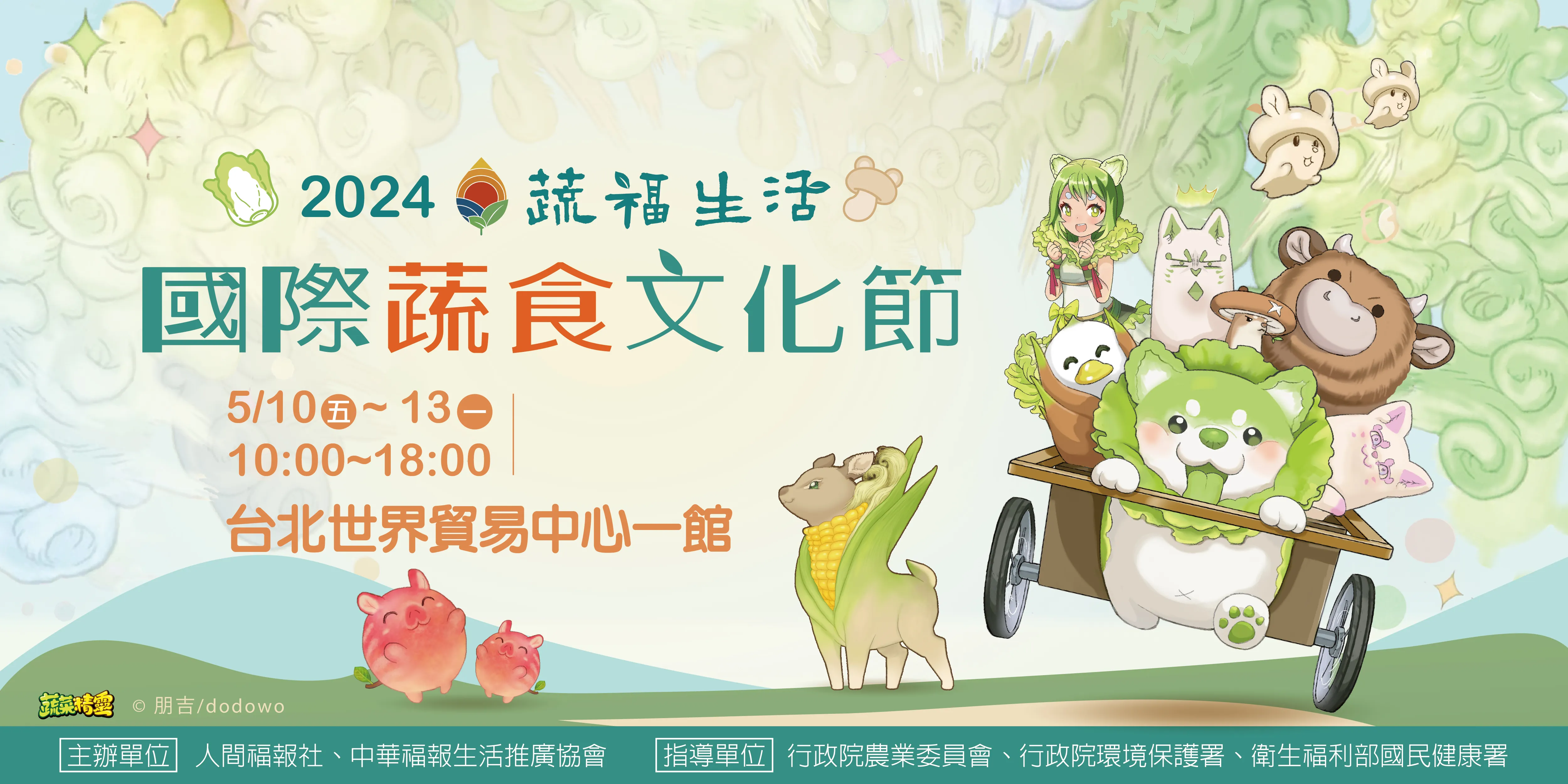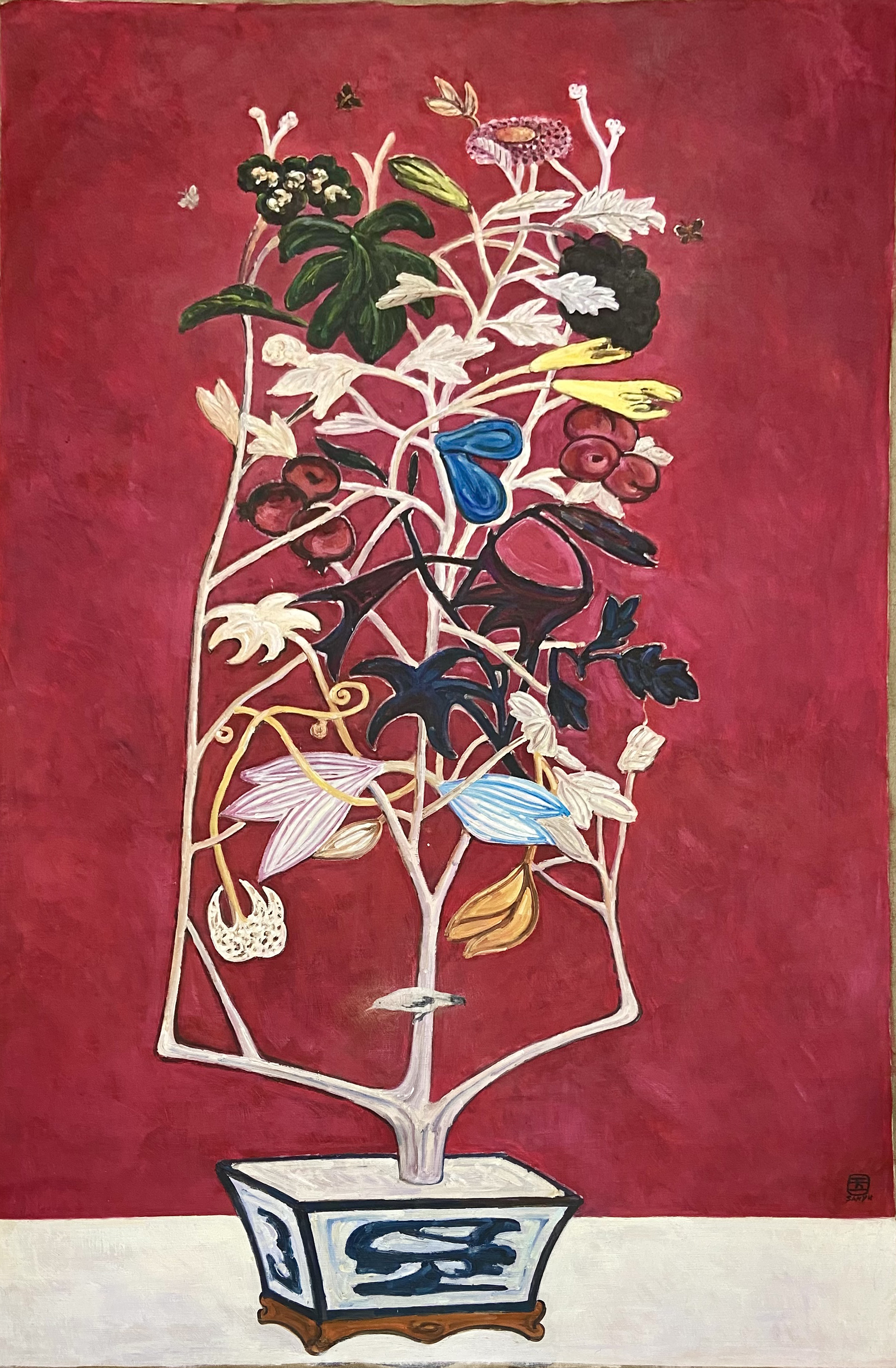


| 時代: | 西元1950年代 A.D. 1950s |
| 尺寸: | 長度:180 cm 寬度:125 cm (未含外框) Length:180 cm Width:125 cm |
| 質地: | 油畫布 Oil painting |
收藏人:歐陽廷相先生
此幅常玉的‟花團錦簇(120號)”為常玉的油畫靜物作品,此幅畫作花盆底部、枝幹部分、果實、花和葉子局部,稍微以書法性白色或同色系線條打邊,立體、色澤深淺不一的線條瀟灑十足,並納入山水圖畫的留白概念,整幅畫構圖簡約。此幅畫作以紅色為背景、白色為桌面,背景的紅色深淺不同,隱約看得出背景下方應有畫過其他畫的痕跡,符合常玉在同一畫布上重複做畫的特性。色彩繽紛的果實和花卉,搭配白色、鵝黃色及綠色葉子,粉白色的莖脈和枝幹,樹上方有蝴蝶幾隻,樹靠近盆景處有一隻鳥似凝神往下望,種於青花瓷花盆中。整幅畫藉由些微色系深淺、陰影,襯托出整體的層次感。此畫是常玉慣用、油畫作畫方式最高境界的平塗法創作,以中國水墨寫意流暢的書法線條,融合西方野獸派的簡潔強烈特色,獨創辨識度高的繪畫風格,此幅局部顏料中即有脫落的毛筆痕跡。常玉性格灑脫,線條力道十足、不重複,即便平塗上色後遮蓋住線條,也不會再重複描線,厚實的平塗色塊搭配中國式的渲染方式,呈現出果實和葉子的立體感,是常玉畫作的重要特徵。此幅畫與國立歷史博物館館藏的《花團錦簇》畫作構圖雷同,惟國立歷史博物館館藏的畫作是畫在纖維板且尺寸較小,畫作上沒有蝴蝶和鳥,此幅畫作尺寸較大且是畫在畫布上。此幅畫作所用之畫布含棉、麻,畫布微厚,為1950年代歐美常用之畫布,畫布後有年代久遠形成的黴斑,以及因年代久遠油畫顏料滲透的痕跡,且畫布已失去韌性、易脆,油畫顏料是常玉慣用以亞麻仁油調色、年代久會有黏性的顏料,而因早期保存環境不佳,讓此幅畫作有部分氧化現象。右下角有繪出的「玉」字圖章,以及羅馬拼音「SANYU」,為常玉油畫常用之落款,此幅為標準、正確之經典常玉畫作。
This piece is Sanyu's oil painting still life "Abundance of Flowers" (No. 120). The painting depicts the bottom of the pot, branches, fruits, flowers, and leaves with slightly calligraphic white or monochromatic lines outlining the edges. The lines, varying in depth and color, are free-flowing and incorporate the concept of blank space from landscape paintings, resulting in a simple composition. The background is red, with shades varying, faintly showing traces of other paintings underneath, consistent with Sanyu's practice of painting over previous works on the same canvas. The colorful fruits and flowers, along with white, goose-yellow, and green leaves, pink-white stems and branches, and a few butterflies above the tree, and a bird near the bonsai tree, all planted in a blue and white porcelain pot. The painting utilizes subtle variations in color and shading to create a sense of depth. This painting demonstrates Sanyu's mastery of the impasto technique, combining fluent calligraphic lines reminiscent of Chinese ink painting with the simplicity and boldness characteristic of Western Fauvism, creating a highly distinctive painting style. Some brush marks are visible in the pigment, indicating the use of a brush. Sanyu's free-spirited character is evident in the powerful and non-repetitive lines, even after covering them with paint. The thick impasto blocks of color, combined with a Chinese-style shading technique, create a sense of volume for the fruits and leaves, a significant characteristic of Sanyu's paintings. The composition of this painting is similar to that of the painting "Abundance of Flowers" in the collection of the National Museum of History, but the latter is painted on fiberboard and is smaller in size, without butterflies and birds. This painting, however, is larger in size and painted on canvas. The canvas used contains cotton and hemp, slightly thick, typical of canvases used in Europe and America in the 1950s. There are traces of mold formed due to age on the back of the canvas, as well as traces of oil paint penetration due to the age of the painting. The canvas has lost its resilience and has become brittle. The oil paints used by Sanyu were typically mixed with linseed oil and may exhibit stickiness over time. Due to poor early preservation conditions, this painting shows signs of oxidation. In the lower right corner, there is a painted seal with the character "玉" (Yù) and the Romanized name "SANYU," commonly used signatures by Sanyu in his oil paintings, indicating that this piece is a standard and authentic work by Sanyu.
.png)
- 常玉‟牧童與水牛” San Yu "Cowherd and Water Buffalo"
- 常玉‟向陽白牡丹(120號)” San Yu " White Peonies Facing the Sun (No. 120)"
- 林風眠‟楊門女將穆桂英” Mr. Lin Fengmian " Mu Guiying, the Female General of the Yang Family "
- 林風眠‟寶蓮燈”
- 林風眠油畫‟京劇關羽與趙雲(漢津口)” Mr. Lin Fengmian "Peking Opera: Guan Yu and Zhao Yun (Han Jin Gate)"
- 常玉‟紅底黃菊” San Yu "Yellow Chrysanthemums on Red Background"
- 林風眠油畫‟白蛇傳” Mr. Lin Fengmian "Legend of the White Snake"
- 林風眠油畫‟大鬧天宮”Mr. Lin Fengmian "Great Uproar in Heaven"
- 林風眠‟四美圖”
- 常玉‟盆菊與蝶(120號)” San Yu "Chrysanthemums and Butterflies (No. 120)"
- 常玉‟牧童與水牛” San Yu "Cowherd and Water Buffalo"
- 常玉‟向陽白牡丹(120號)” San Yu " White Peonies Facing the Sun (No. 120)"
- 林風眠‟楊門女將穆桂英” Mr. Lin Fengmian " Mu Guiying, the Female General of the Yang Family "
- 林風眠‟寶蓮燈”
- 林風眠油畫‟京劇關羽與趙雲(漢津口)” Mr. Lin Fengmian "Peking Opera: Guan Yu and Zhao Yun (Han Jin Gate)"
- 常玉‟紅底黃菊” San Yu "Yellow Chrysanthemums on Red Background"
- 林風眠油畫‟白蛇傳” Mr. Lin Fengmian "Legend of the White Snake"
- 林風眠油畫‟大鬧天宮”Mr. Lin Fengmian "Great Uproar in Heaven"
- 林風眠‟四美圖”
- 常玉‟盆菊與蝶(120號)” San Yu "Chrysanthemums and Butterflies (No. 120)"
